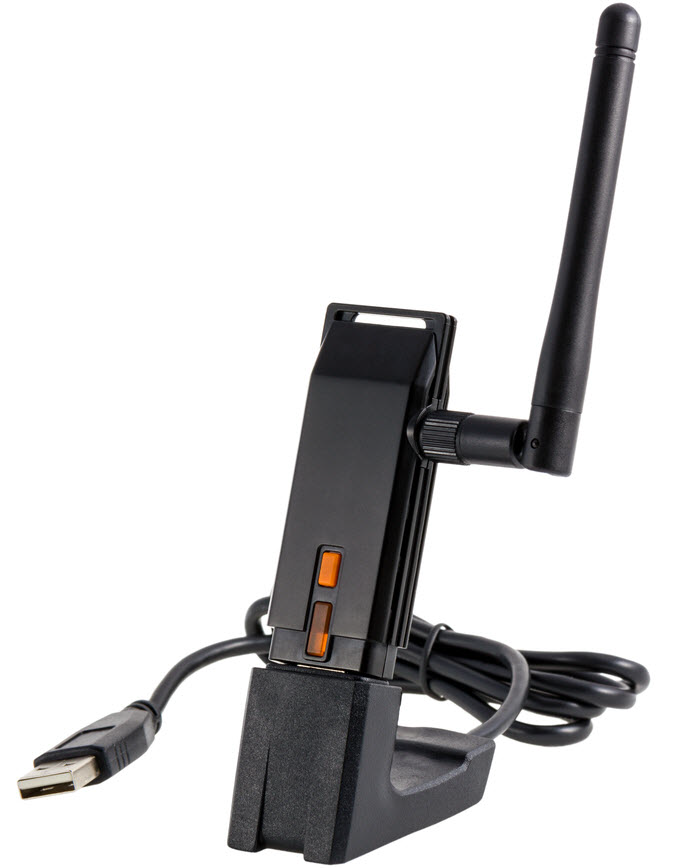USB Wi-Fi Adapter 101
What To Look For
Ultimately, several aspects need to be considered when choosing a USB Wi-Fi adapter. The first one is the adapter's maximum data rate. In other words, for the home user of Google Fiber at 1 Gb/s, an AC1200 adapter can be easily justified. But for the user with 10 Mb/s DSL, any N150 USB Wi-Fi adapter will easily outperform the connection. Faster hardware isn't necessary, since it can't be utilized for improving Internet performance. On the other hand, for tech enthusiasts who use their home networks for more than just Web browsing, faster Wi-Fi adapters will accelerate file transfers across the LAN if the other network interfaces are up for the challenge. Look for a USB 3.0 adapter (as opposed to USB 2.0) for its higher transfer rate.
The next aspect is the need for an antenna. Gone are the days of the DIY Pringles cantenna; premade solutions are readily available now. If your USB Wi-Fi adapter is going to be used in the same room as the router, than any compact adapter should have enough signal strength. However, in cases where the USB Wi-Fi adapter is used farther away, especially with walls or floors in between, than an adapter with a high-gain antenna is called for. This needs to be balanced against any physical constraints, particularly when a bulky adapter will compromise a notebook's portability. Also, some adapters come with a dock for ease of placement, which can be useful.
Make sure that your USB Wi-Fi adapter supports all of the 128-bit security standards, including WEP, WPA and WPA2. Also, certain manufacturers provide more complete software packages that are easy to configure. Many manage the Wi-Fi connection, replacing Windows' built-in interface. Look to see if your vendor of choice has released software updates for its previous products as a sign of commitment to long-term support. Finally, look at the warranty period, which can vary from 90 days to the product's lifetime.
Get Tom's Hardware's best news and in-depth reviews, straight to your inbox.

Jonas P. DeMuro is a freelance reviewer covering wireless networking hardware.
-
Achoo22 Replya computer needs to be connected to its network, and in turn the Internet, to be truly useful
I got this far, then tuned out. -
SuperVeloce Reply
okay, I see you don't get what the intended audience in this article is. i'll re-word that for you: "a multimedia family / office work computer needs to be connected to its network..."a computer needs to be connected to its network, and in turn the Internet, to be truly useful
I got this far, then tuned out. -
SamSerious USB extension cables are often causing problems. I'd never extend a cable by more than one meter and make sure it is a very high quality cable or the voltage will lower dramatically causing the device not to work properly anymore. Or you have to get yourself an active USB expander which is usually quite a bit more expensiv.Reply
On the other hand, antenna cables are even worse to extend... -
jacobian You think you need USB3 to drive a 802.11ac network adapter at full speed? Please. You couldn't have been more confused. Let's say we're talking about a two stream AC device, so theoretically it's capable of 867mbps throughput in 5GHz band. However, much of that number pertains to the "physical layer" information transfer, the chatter that ensures that your data is transferred accurately, under optimal condition (e.g. 6 ft from the router). At TCP/IP level, the throughput will be much lower, even if the distance is short, somewhere in the neighborhood of 100-300mbps, depending on your luck. In other words, a lot less than USB2 can handle.Reply
You see, the wireless data transfer rates are basically a big marketing scam because half of more of that data transfer rate will disappear due to weakening signal with distance or on the physical layer chatter. Wireless is not like wired Ethernet, where saying 100Mbps really means that you will actually see TCP/IP data transferred nearly at that rate. In the wi-fi world, the marketing can say they sell you a "gigabit ac1750 router (or adapter)", and in real life you may well end up with just 100Mbps or slower data throughput. If you get 200mbps or more, you should be jumping from joy. -
ZeusGamer I'm using a dual band PCI Express wi-fi module. For some reason, it's much better than my ethernet connection. Could be because my killer port is only single band rather than dual. I've not lagged one bit with this accessory and I've been using it for at least 8 - 9 months now.Reply -
user_friendly Id like to point out that having an external usb wifi can get really hot and malfunction. Its not inside of an air circulated case, so mine tends to get blazingly hot. i have the n600 which i can game on and have no problems. MosltyReply
